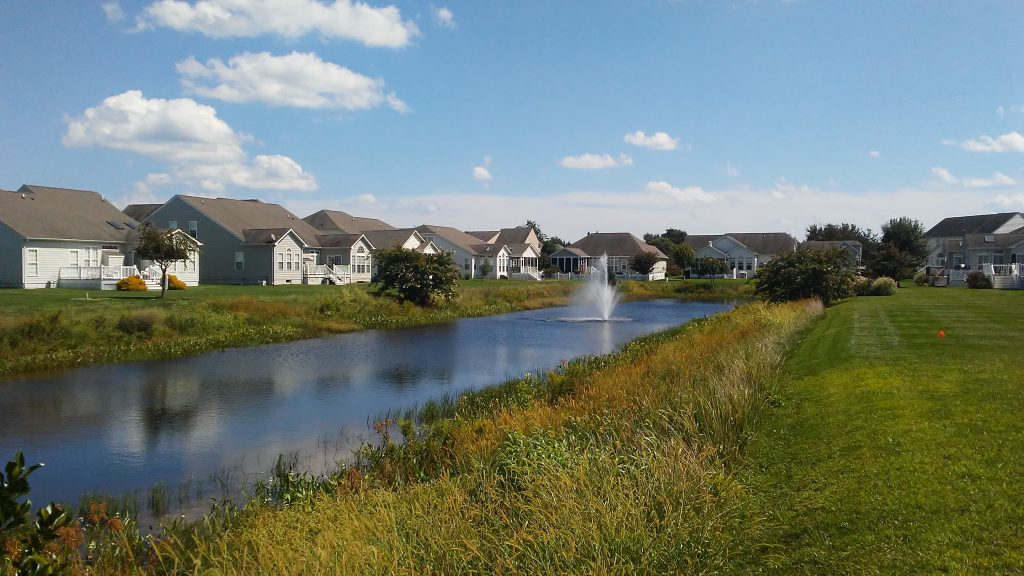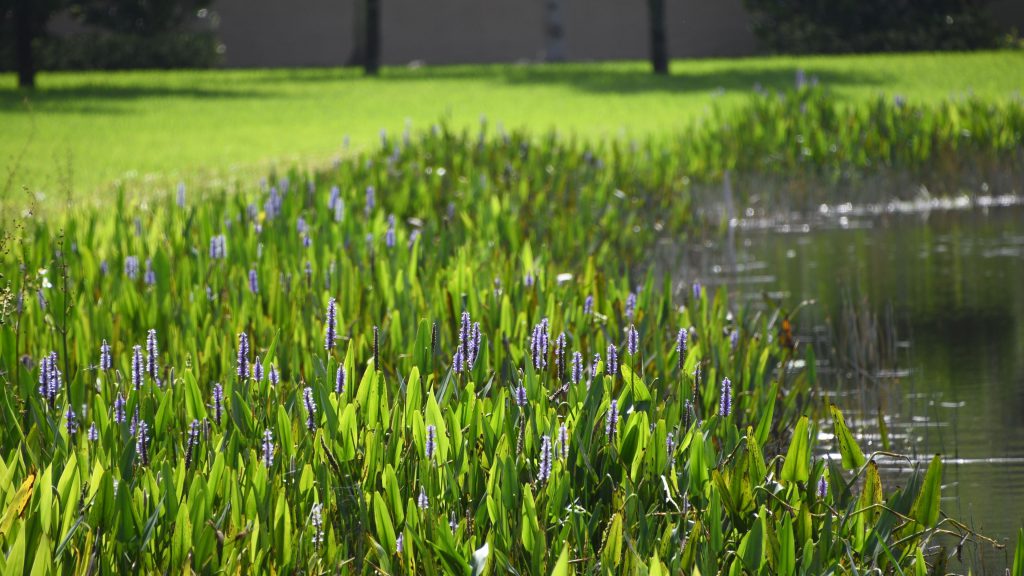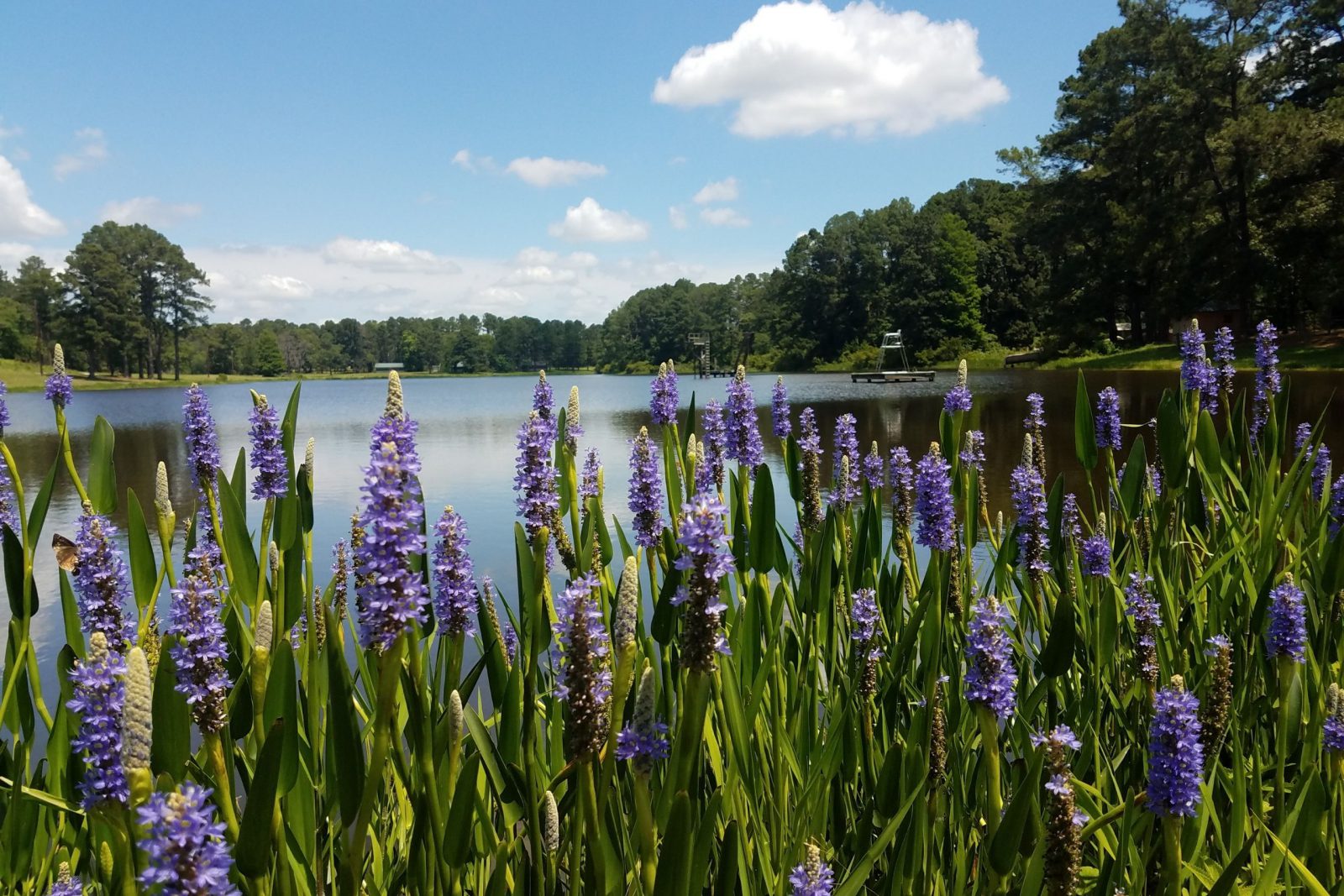
Utilize Buffer Zones as a Preventative Pond Maintenance Tool
I have always been a fan of Benjamin Franklin’s saying “an ounce of prevention is worth a pound of cure.” Lake and pond management is a perfect example of this advice; preventing water quality problems at their source is often the most effective measure to help achieve long-term aquatic health.
Community managers, golf course superintendents, and private landowners interested in becoming more proactive in their maintenance approach may be intimidated by the many environmental variables and aquatic management strategies available to them. However, an easy and effective place to start is by creating and maintaining a shoreline buffer of native vegetation around their waterbody.
What is a shoreline buffer?
The term “buffer zone” is used in the lake and pond management industry to refer to the area surrounding the water from the edge to several meters in elevation above. A proper buffer zone utilizes the well-established root system of native grasses and vascular plants to help protect the waterbody. The dense root systems and high stem count of an established native buffer are extremely effective at slowing the velocity of stormwater runoff and absorbing the excess nutrients contained within them.
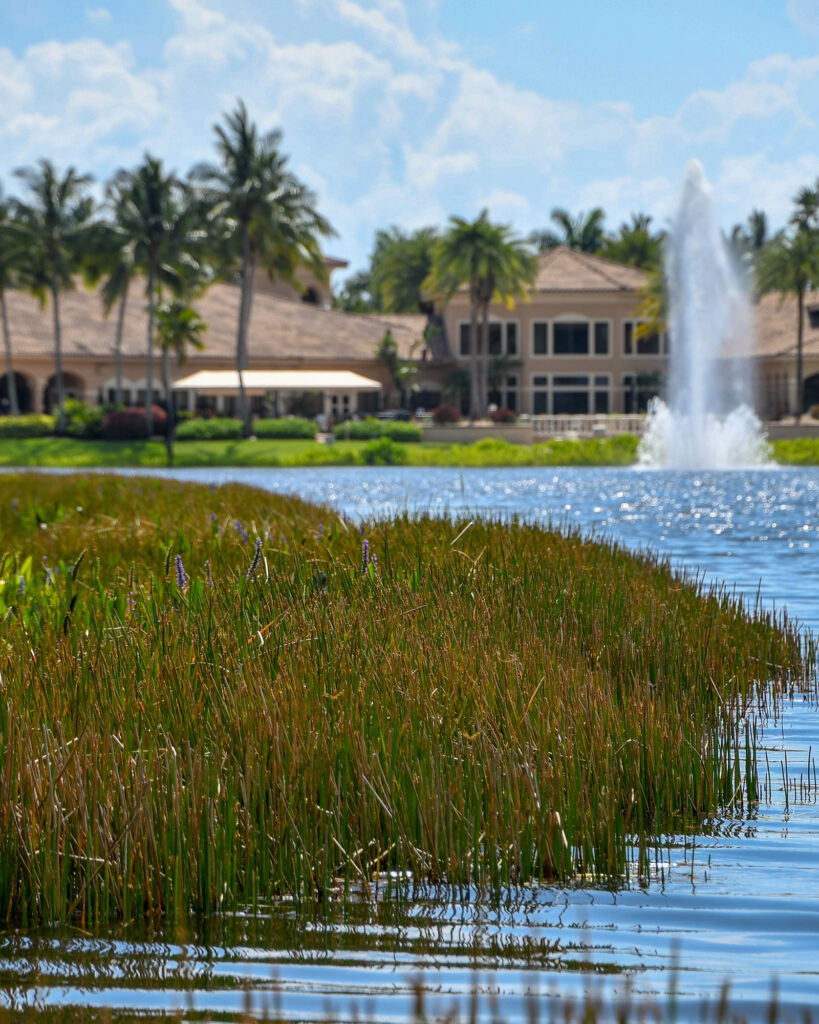
How buffers help reduce nutrients in the water column
Runoff that is allowed to flow unimpeded to the pond edge can lead to erosion, resulting in sedimentation that may reduce depths in a lake or pond over time. Dissolved nutrients carried by stormwater runoff in the form of fertilizers, pet waste or grass clippings may result in harmful, unsightly algal blooms or other water quality problems.
Dense buffer zones can also prevent geese from easily entering or exiting a pond to nest, feed, and leave droppings around the waterbody. In order to effectively deter these water quality threats, plants within the buffer zone must be allowed to grow their natural heights in a band at least 3-5 ft surrounding the pond.
Buffer zone maintenance
While buffers composed of native plants and vegetation should never be mowed, they will still require some maintenance throughout the year. The buffer can be trimmed annually to promote healthy growth and maintain its aesthetic beauty. Typically, it’s recommended to cut the buffer area no less than 18 inches, especially during the cooler season.
Enhance your pond with beautiful native plants
In addition to aiding in the overall health and balance of a waterbody, buffer zones can also be used to enhance the aesthetics of a property. Flowering native plants can be selected to add seasonal color, as well as attract beneficial insects. Swamp milkweed and pickerelweed, for example, attract dragonflies that naturally prey on mosquitoes. Other common buffer plants include duck potato, blueflag iris, lizard’s tail and cardinal flower. A lake management professional can recommend additional plant species that are easy to maintain and native to your specific region.
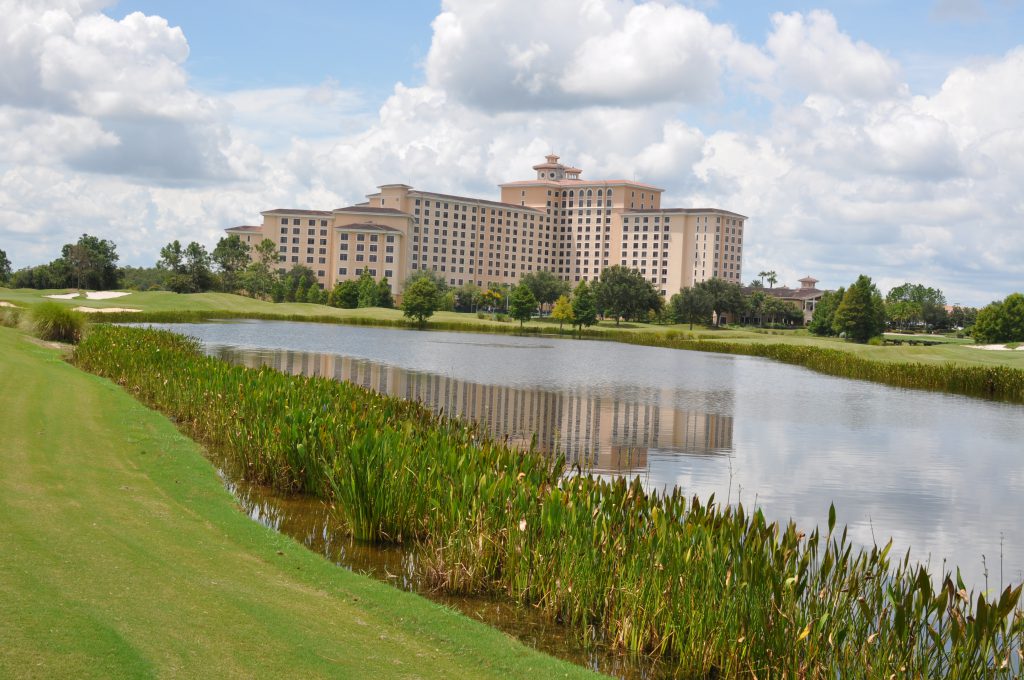
Avoid woody vegetation along the shoreline
From both an aesthetic and functional standpoint, it is important to distinguish between shallow, dense grass root systems of native plants and the simple, deep root systems of woody vegetation. Trees that are allowed to grow in buffer zones can shade out grass species and compromise pond dam structures. They may also attract undesirable rodents, like beavers and muskrats, which are known to build dams, damage shorelines, and chew through important power cables. To make a long story short, the removal of woody vegetation is crucial to helping prevent costly damage and ensure you pass your next stormwater management facility inspection.
Enhance your property and waterbody's health with a shoreline buffer
A well-maintained buffer zone serves as an important, natural and proactive aquatic management strategy. A properly introduced and managed vegetative buffer can also help property owners and managers save money on annual pond maintenance costs, enhance property value, extend the lifespan of a waterbody and contribute to an overall improvement in water quality. Pairing the benefits of a native buffer with other proactive strategies like aeration, biological applications and nutrient remediation will allow your waterbody to flourish while serving as a beautiful long-lasting centerpiece for your home, golf course or community.
Not sure how to get started? Contact your lake manager for recommendations.
Explore Shoreline Erosion Management
SOLitude Lake Management is an environmental firm committed to providing full-service solutions that improve water quality, preserve natural resources, and reduce our environmental footprint. Our services include lake, pond, wetland and fisheries management programs, algae and aquatic weed control, mechanical harvesting, hydro-raking, installation and maintenance of fountains and aeration systems, water quality testing and restoration, bathymetry, lake vegetation studies, biological assessments, habitat assessments, invasive species management and nuisance wildlife management. Services, consulting and aquatic products are available to clients nationwide, including homeowners associations, multi-family and apartment communities, golf courses, commercial developments, ranches, private landowners, reservoirs, recreational and public lakes, municipalities, parks, and state and federal agencies. Learn more about SOLitude Lake Management and purchase products at www.solitudelakemanagement.com.








